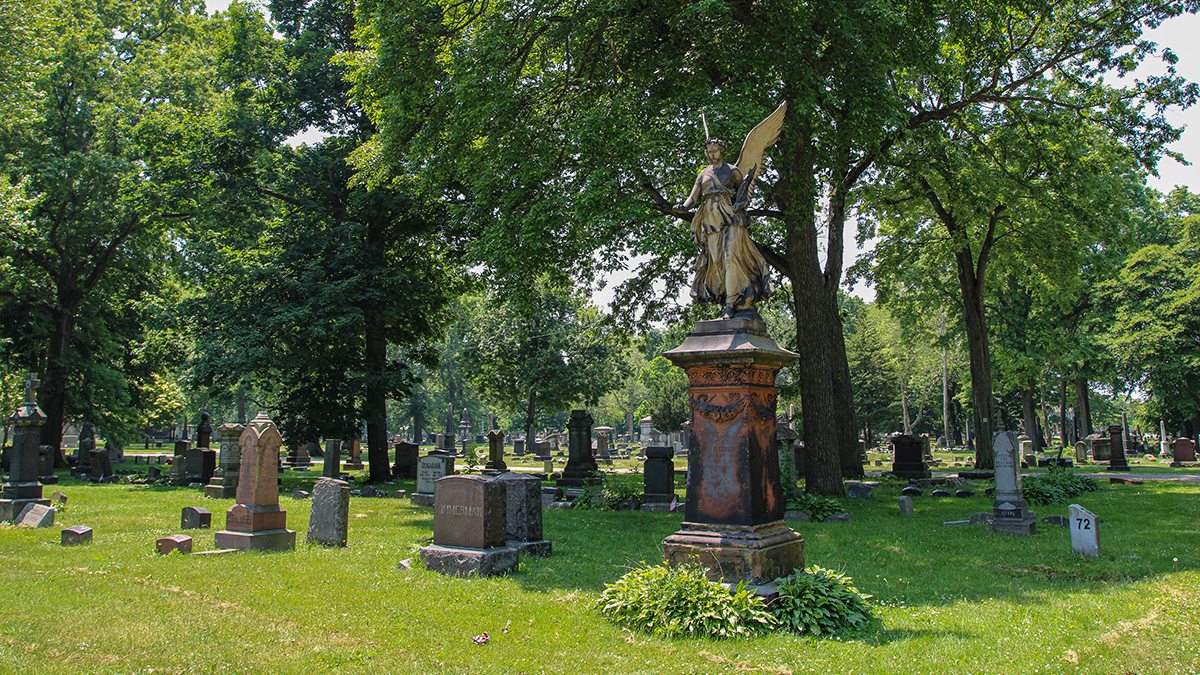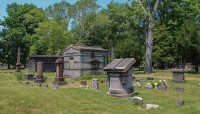Landscape Information
Located approximately two-and-a-half miles southeast of downtown, this cemetery incorporates 60 acres purchased by the city in 1851. In 1852, the Committee on Public Grounds hired Howard Daniels to design the property’s southern third. In Daniels’ plan, largely extant, circular geometries animate the flat ground plane. A central roundabout is surrounded by concentric circles of burial lots crosscut by drives like radial spokes. From the southeast and southwest corners, secondary circular formations of burial lots overlap with the central arrangement.
The remaining two-thirds of the cemetery was developed through the late nineteenth and early twentieth centuries. Circular motifs from Daniels’ plan were extended into the northwest quadrant, where curvilinear drives were also introduced. In contrast, the northeast quadrant is platted in a rectilinear grid. Plantings of shade trees, including maples and sycamores, are a unifying feature of each section. Some older burial lots exhibit Rural Cemetery characteristics, though mausolea and headstones represent a broad range of Revival styles.
Once accessible from several points, the cemetery is accessed today by north and south entrances connected by a linear drive. A stone Gothic gatehouse (1875; reconstructed in 2019) frames the Woodland Avenue entrance. Several other features, including a chapel and two ornamental fountains, were installed in the 1880s (no longer extant), with a flagpole now occupying the chapel’s site at the cemetery’s center. The central drive is paved with asphalt while the remainder of the interconnected drives, originally paved, are predominantly grass or compacted earth. Many prominent abolitionists and African American leaders are interred here, reflecting Cleveland’s role in historic events from the antebellum era through the Civil Rights movement. Among those interred are members of the Grand United Order of Odd Fellows, an African American Masonic Lodge chartered just after the American Revolution, and more than 80 Civil War veterans of the United States Colored Troops, whose graves are marked by a monument installed in 2012.
The cemetery was listed in the National Register of Historic Places in 1986, became a Cleveland Landmark in 2008, and an Ohio Historical Landmark in 2009. In 2015 it became the first site in Cleveland included in the National Park Service Underground Railroad Network to Freedom.
















